
How to Use Relay 5VDC: Examples, Pinouts, and Specs
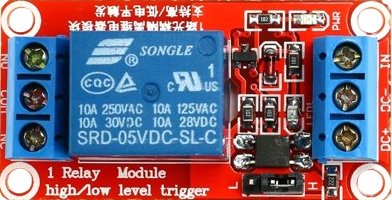
 Design with Relay 5VDC in Cirkit Designer
Design with Relay 5VDC in Cirkit DesignerIntroduction
A Relay 5VDC is an electromechanical switch that operates using a 5V DC signal to control the opening or closing of a circuit. It allows low voltage signals to control high voltage or high current devices, making it an essential component in automation, home appliances, and industrial control systems.
Explore Projects Built with Relay 5VDC
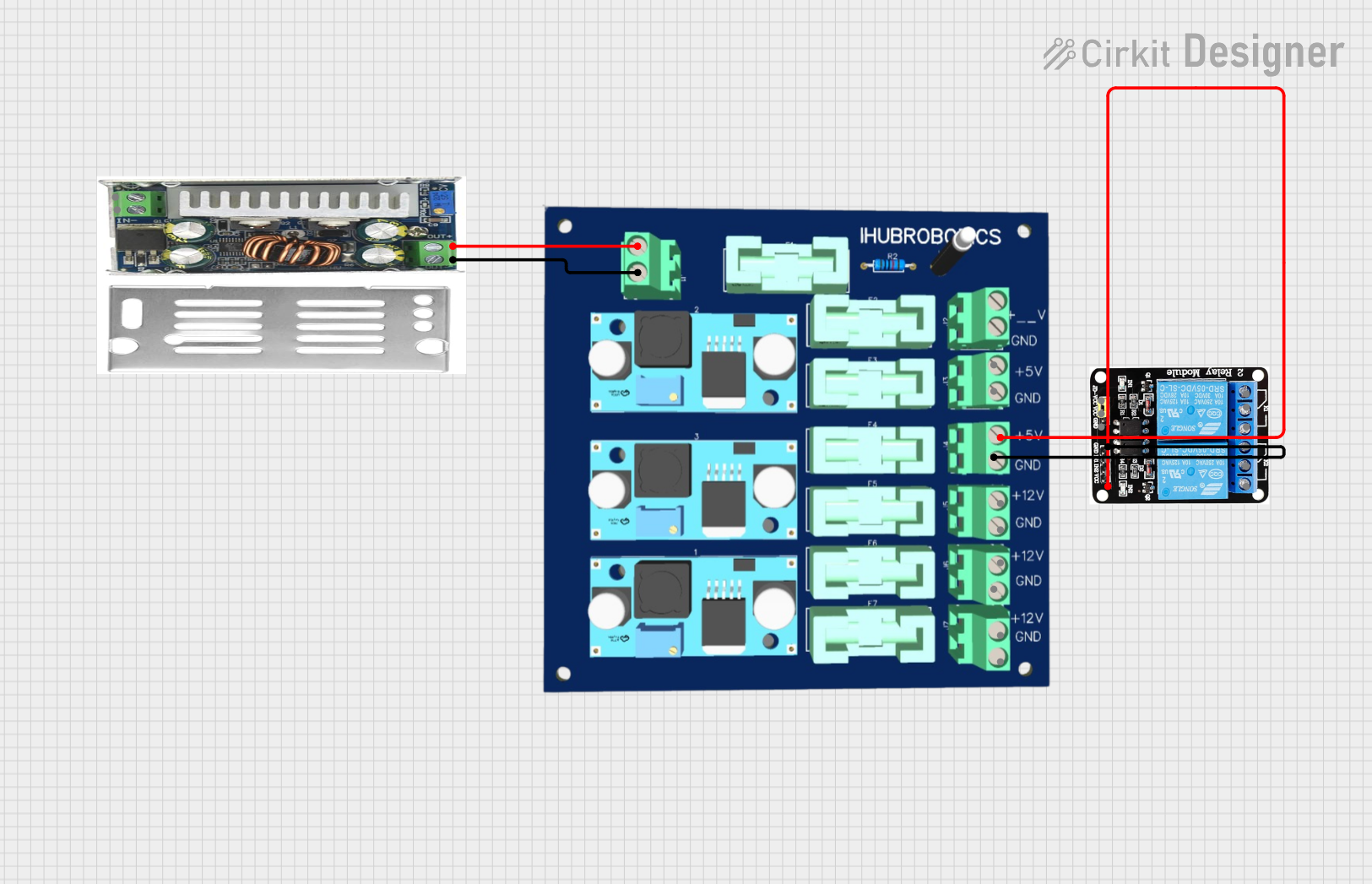
 Open Project in Cirkit Designer
Open Project in Cirkit Designer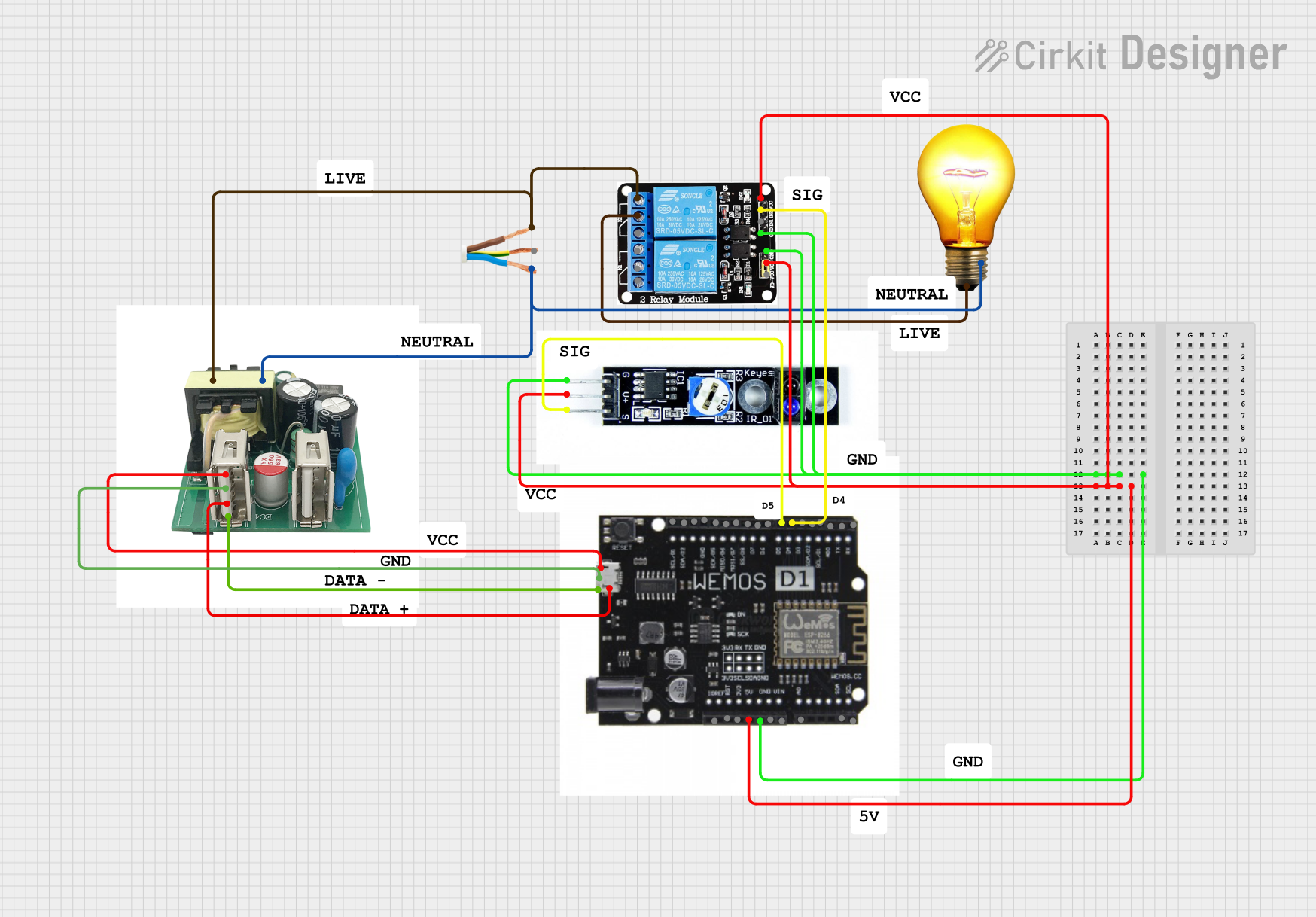
 Open Project in Cirkit Designer
Open Project in Cirkit Designer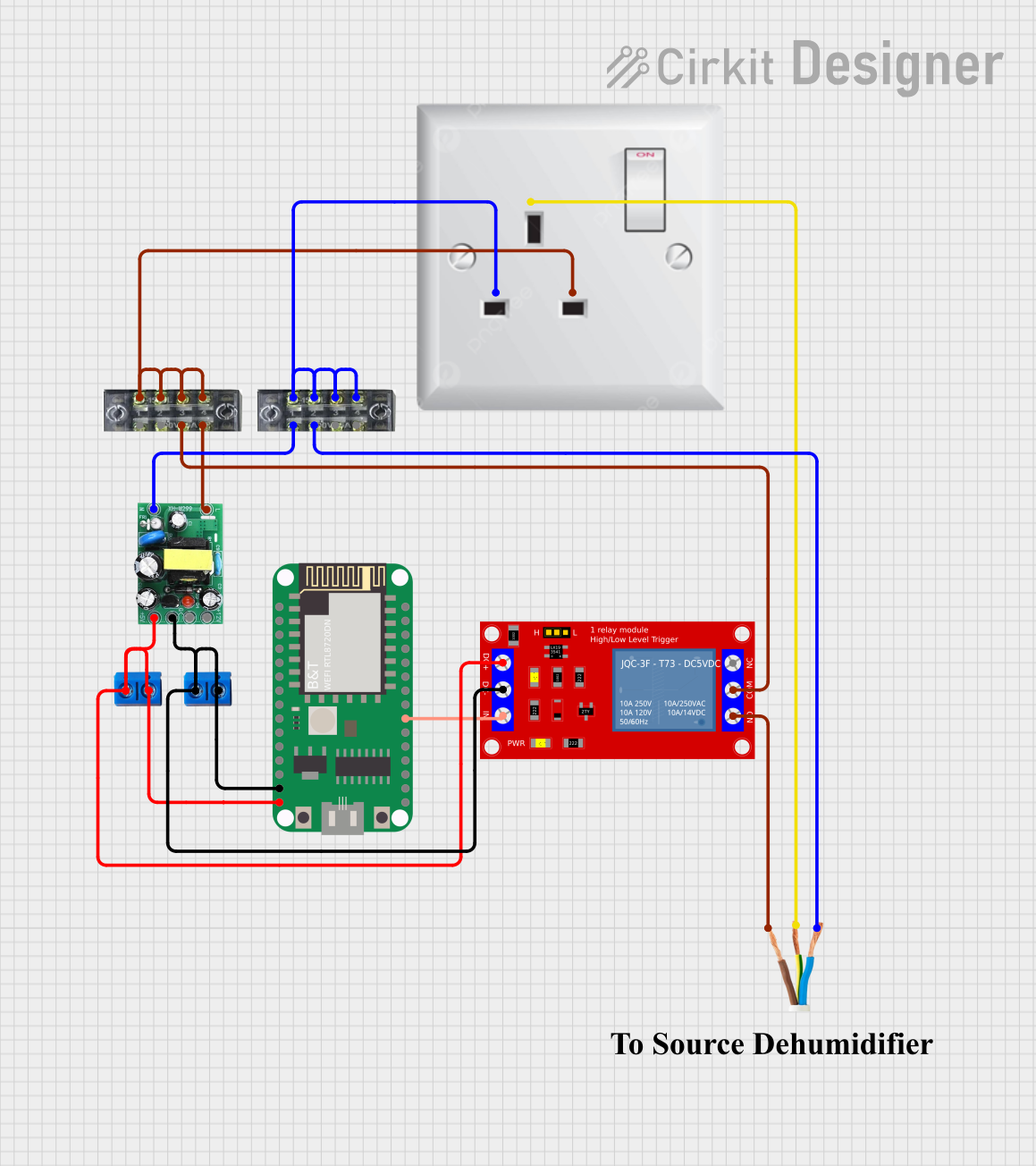
 Open Project in Cirkit Designer
Open Project in Cirkit Designer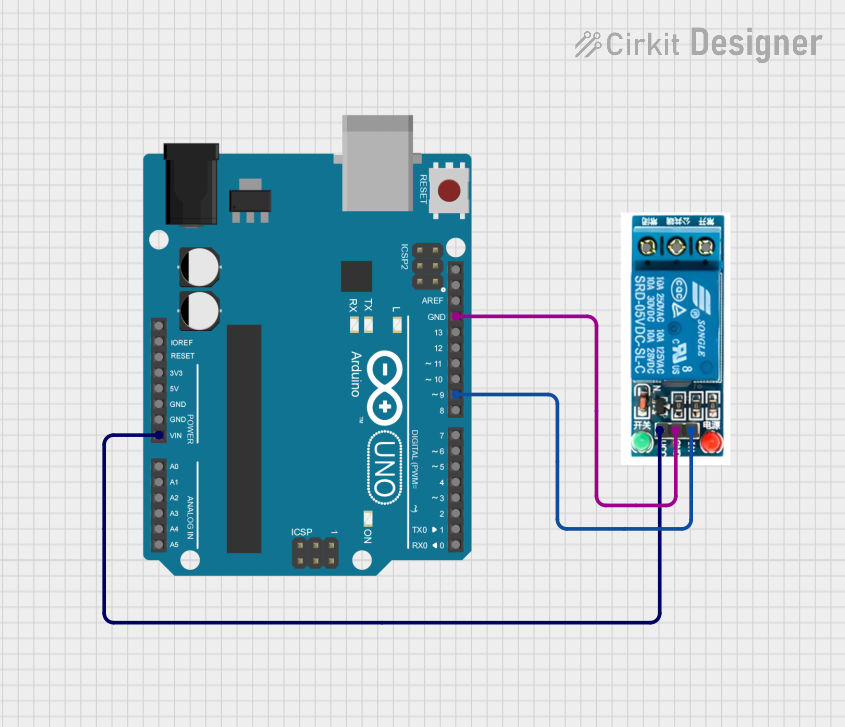
 Open Project in Cirkit Designer
Open Project in Cirkit DesignerExplore Projects Built with Relay 5VDC

 Open Project in Cirkit Designer
Open Project in Cirkit Designer
 Open Project in Cirkit Designer
Open Project in Cirkit Designer
 Open Project in Cirkit Designer
Open Project in Cirkit Designer
 Open Project in Cirkit Designer
Open Project in Cirkit DesignerCommon Applications and Use Cases
- Home automation systems (e.g., controlling lights or fans)
- Industrial equipment control
- Motor control circuits
- Safety systems (e.g., overload protection)
- IoT projects with microcontrollers like Arduino or Raspberry Pi
Technical Specifications
Below are the key technical details for the Relay 5VDC:
| Parameter | Value |
|---|---|
| Operating Voltage | 5V DC |
| Trigger Voltage | 3.75V to 5V DC |
| Trigger Current | 15-20 mA |
| Contact Type | SPDT (Single Pole Double Throw) |
| Contact Rating | 10A @ 250V AC / 10A @ 30V DC |
| Coil Resistance | ~70 Ohms |
| Isolation Voltage | 1500V AC |
| Switching Time | 10 ms (operate), 5 ms (release) |
| Dimensions | ~28mm x 12mm x 10mm |
| Weight | ~10g |
Pin Configuration and Descriptions
The Relay 5VDC typically has 5 pins. Below is the pinout and description:
| Pin Name | Description |
|---|---|
| VCC | Connects to the 5V DC power supply to energize the relay coil. |
| GND | Ground connection for the relay coil. |
| IN | Control signal input. A HIGH signal (5V) activates the relay. |
| COM | Common terminal for the relay switch. |
| NO | Normally Open terminal. Connects to COM when the relay is activated. |
| NC | Normally Closed terminal. Connects to COM when the relay is not activated. |
Usage Instructions
How to Use the Relay 5VDC in a Circuit
- Power the Relay: Connect the VCC pin to a 5V DC power source and the GND pin to ground.
- Control Signal: Use a microcontroller (e.g., Arduino) or a 5V DC signal to control the IN pin. A HIGH signal activates the relay, while a LOW signal deactivates it.
- Connect the Load:
- For devices that should turn ON when the relay is activated, connect the load between the COM and NO pins.
- For devices that should turn OFF when the relay is activated, connect the load between the COM and NC pins.
- Isolation: Ensure proper isolation between the low voltage control circuit and the high voltage load circuit to prevent damage or hazards.
Important Considerations and Best Practices
- Flyback Diode: Always use a flyback diode across the relay coil to protect the circuit from voltage spikes when the relay is deactivated.
- Current Rating: Ensure the load current does not exceed the relay's contact rating (10A).
- Power Supply: Use a stable 5V DC power source to avoid erratic relay behavior.
- Safety: When working with high voltage, ensure proper insulation and follow safety guidelines.
Example: Connecting Relay 5VDC to Arduino UNO
Below is an example of how to control a Relay 5VDC using an Arduino UNO:
Circuit Connections
- Relay VCC → Arduino 5V
- Relay GND → Arduino GND
- Relay IN → Arduino Digital Pin 7
- Relay COM → One terminal of the load (e.g., a light bulb)
- Relay NO → Power source for the load (e.g., 220V AC or 12V DC)
Arduino Code
// Define the pin connected to the relay control input
const int relayPin = 7;
void setup() {
// Set the relay pin as an output
pinMode(relayPin, OUTPUT);
// Ensure the relay is off at startup
digitalWrite(relayPin, LOW);
}
void loop() {
// Turn the relay ON (activates the connected load)
digitalWrite(relayPin, HIGH);
delay(5000); // Keep the relay ON for 5 seconds
// Turn the relay OFF (deactivates the connected load)
digitalWrite(relayPin, LOW);
delay(5000); // Keep the relay OFF for 5 seconds
}
Troubleshooting and FAQs
Common Issues and Solutions
Relay Not Activating:
- Cause: Insufficient control signal voltage.
- Solution: Ensure the IN pin receives a 5V HIGH signal. Check the microcontroller's output voltage.
Relay Clicking Rapidly:
- Cause: Unstable power supply or noisy control signal.
- Solution: Use a decoupling capacitor (e.g., 100µF) near the relay's VCC and GND pins.
Load Not Turning ON/OFF:
- Cause: Incorrect wiring of the load or relay terminals.
- Solution: Verify the connections between COM, NO, and NC pins.
Burnt Relay Contacts:
- Cause: Load current exceeds the relay's contact rating.
- Solution: Use a relay with a higher current rating or add a contactor for high-power loads.
FAQs
Q1: Can I use the Relay 5VDC with a 3.3V microcontroller?
A1: Yes, but you may need a transistor or MOSFET to amplify the 3.3V signal to 5V for proper activation.
Q2: Is the Relay 5VDC suitable for switching DC loads?
A2: Yes, it can switch DC loads up to 30V at 10A. Ensure the load does not exceed these ratings.
Q3: Can I control multiple relays with one Arduino?
A3: Yes, as long as each relay is connected to a separate digital pin and the Arduino can supply sufficient current.
Q4: Why is a flyback diode necessary?
A4: The flyback diode protects the circuit from voltage spikes generated when the relay coil is de-energized, preventing damage to the microcontroller or other components.